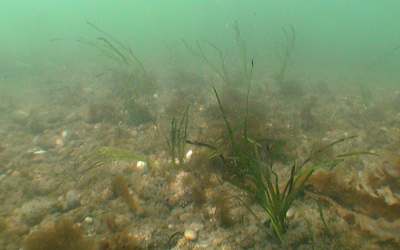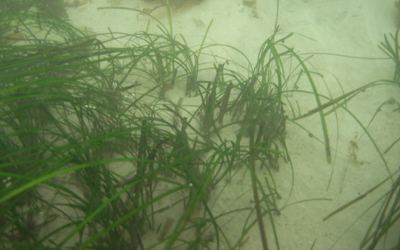 |
 |
||
Sediment |
||
Although eelgrass thrives in sandy sediment, it is able to survive in substrates ranging from mud to gravel. It tends to grow in surface sediments having a maximum of 15% silt and clay particles and a maximum of 8% organic matter. Seagrasses have often been called ecosystem engineers because of their ability to modify their environment, particularly the sediment. When eelgrass becomes established in a location, there is often a transition of course to fine sediments and an increase in available nutrients to the seagrass. This is because eelgrass blades lessen the strength of currents and waves, causing suspended particles in the water column to settle to the bottom. The seagrass roots and rhizomes help to “trap” or prevent these particles from becoming re-suspended. Below, you can see why eelgrass is often called an ecosystem engineer. At one of our restoration sites in Long Island Sound, which previously had a cobble bottom with some macroalgae, we have been able to watch the sand accumulate over time as the eelgrass expands into dense, interconnecting patches. |
||
 |
 |
|
Before: This is just after the initial plantings took place in June 2005.
|
After: This photo was taken at the same location in February 2008.
|
|
HOME ~ CONTACT US ~ ABOUT OUR PROGRAM ~ CCE SUFFOLK COUNTY HOME
© 2012 www.SeagrassLI.org / Cornell Cooperative Extension Marine Program